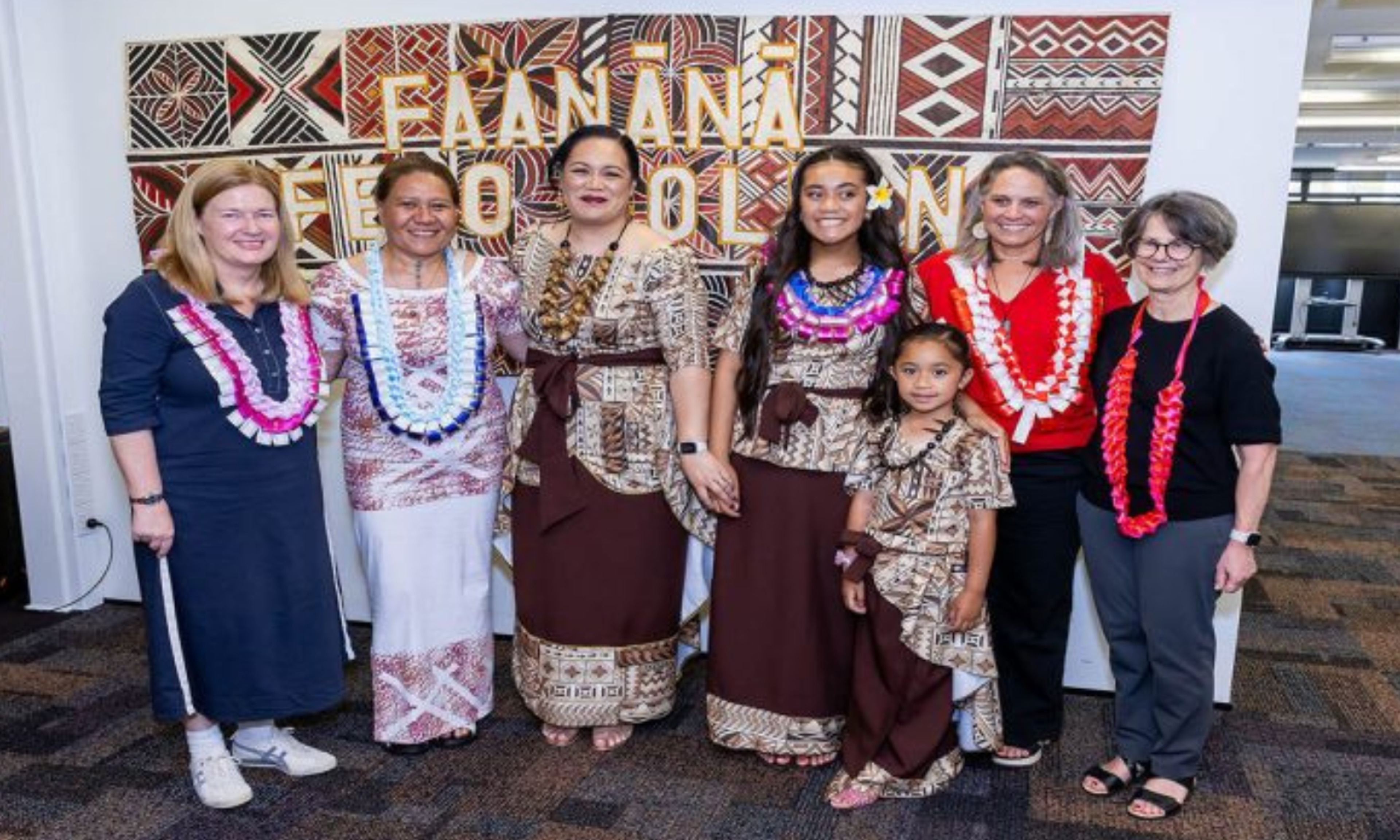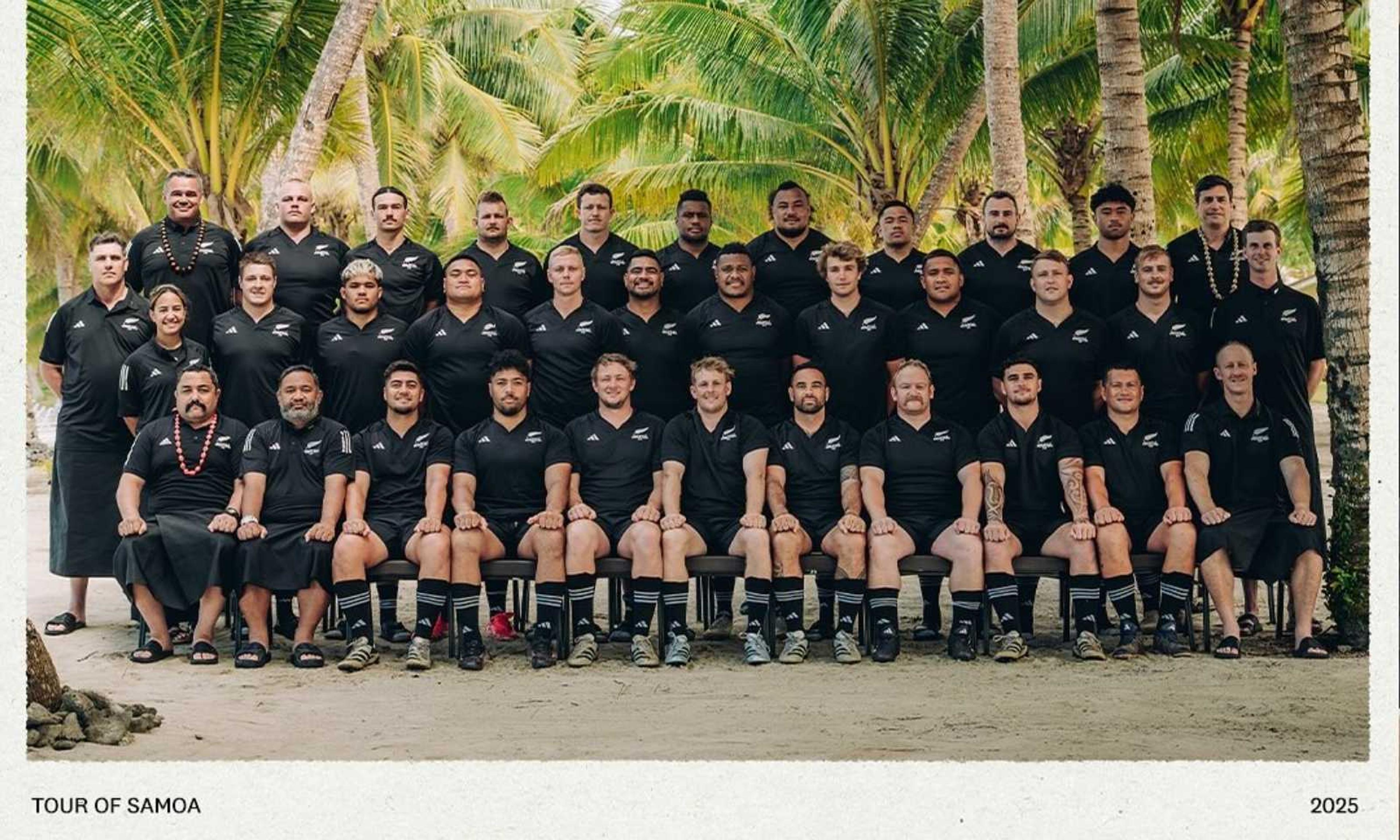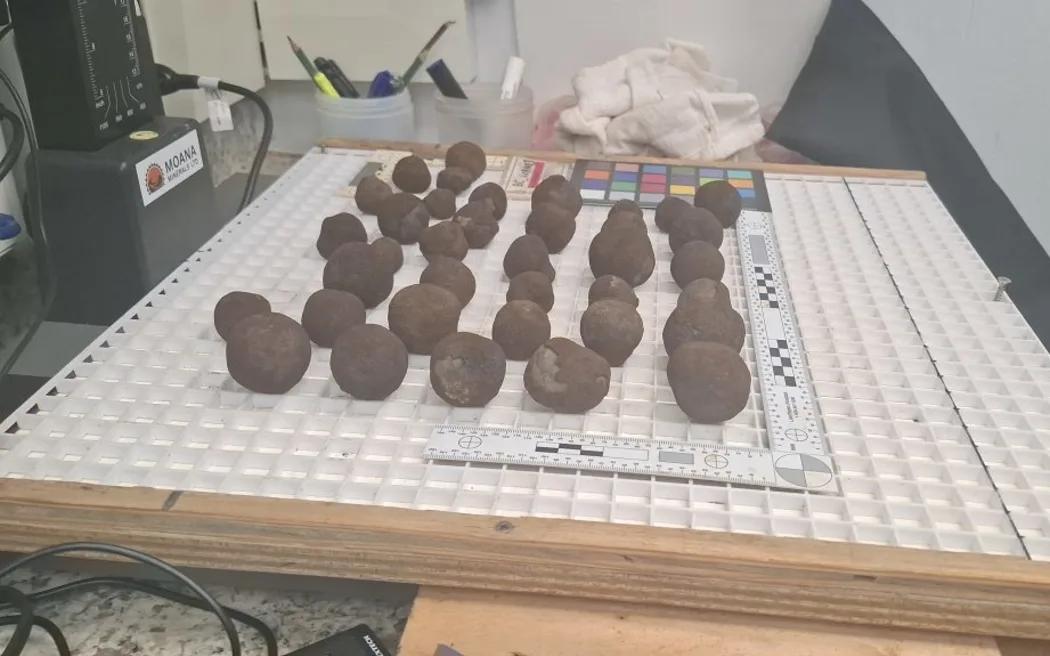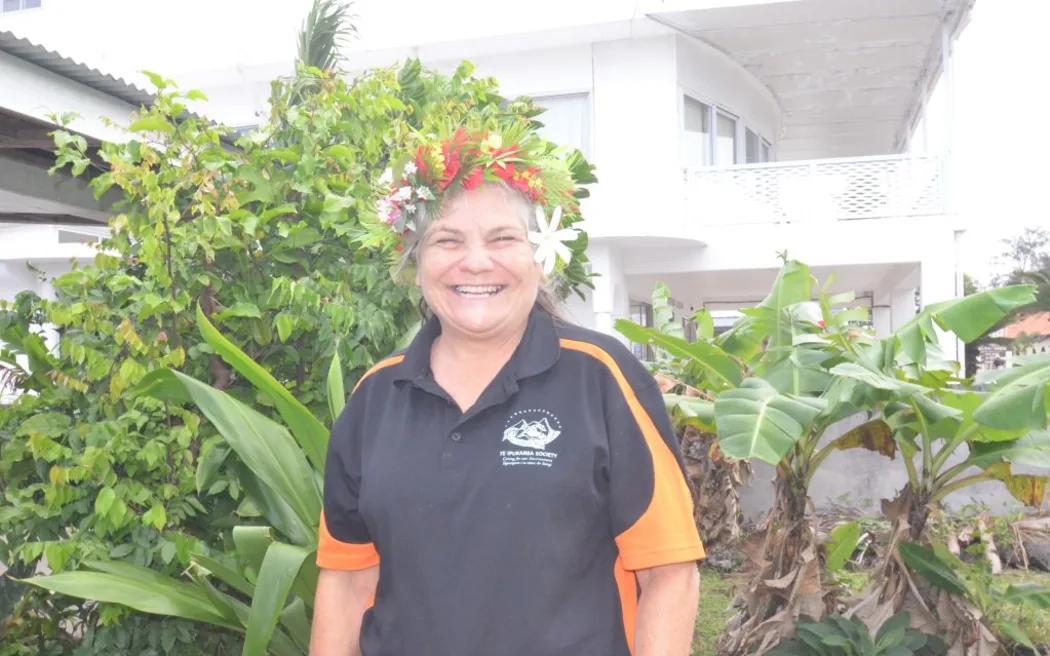

The image shows a part of the Cook Islands sea floor.
Photo/Mountains in the Sea/NOAA Ocean Exploration
Cook Islands confronts critical questions on identity as debate on deep sea mining grows
The Pacific nation holds one of the largest Exclusive Economic Zones, with an estimated 6.7 billion tonnes of polymetallic nodules rich in cobalt, manganese, and other rare earth minerals.


Law expert: US boat strike controversy a lesson for the Pacific

Heartland XV coach reflects on emotional return to Sāmoa

Most New Zealand teachers set for six-figure pay after new deal struck with govt


Law expert: US boat strike controversy a lesson for the Pacific

Heartland XV coach reflects on emotional return to Sāmoa

Most New Zealand teachers set for six-figure pay after new deal struck with govt
Cook Islands confronts critical questions on identity as debate on deep sea mining grows
As the Cook Islands approaches the end of its five-year seabed minerals exploration phase and the latest partnership with the superpowers United States and China, the question facing its people is no longer just about mining - but about identity, sovereignty, stewardship, and the ocean that binds them all.
Cook Islands holds one of the largest Exclusive Economic Zone, with an estimated 6.7 billion tonnes (Cook Islands EEZ Resource Estimate - Deep Sea Mining) of polymetallic nodules rich in cobalt, manganese, and other rare earth minerals.
However, while no mining is yet underway, the debate around what should come next is gaining urgency, especially as calls for a global moratorium on deep sea mining continues to grow.
For Cook Islanders it is not a priority.
'There is no deep sea mining'
Mike Tavioni, a master carver and a well-respected elder in the Cook Islands thinks that the conversation around the topic has become unbalanced and dismisses it stating, "People are worried over nothing".
Tavioni said, "Everybody is afraid of something that is not happening, it will not happen in the next 10 years.
According to the master carver, the word 'mining' is emotionally charged, "it is a scare tactic, its extraction, and if research is not done now, in ten years' time it will be better."
For Tavioni, the research phase brings opportunity.
Tavioni has been engaging with one of the exploration companies- CIC Ocean Research in an attempt to understand their work better and seems to be convinced that the exploration is harmless.
He believes that extending the exploration phase makes sense, because "no project of this size happens in five years."

Mike Tavioni. Photo/Cook Islands News/Losirene Lacanivalu
According to Tavioni the nodules are mostly located in the North of Aitutaki, closer to Penhryn and is divided into three exploration sites for the three exploration companies that have been given the green light to explore Cook Islands waters.
The three exploration companies, Cook Islands Cobalt (CIC) Limited, Moana Minerals Limited (a subsidiary of Ocean Minerals LLC), and Cook Islands Investment Company (CIIC) Seabed Resources Limited holding minerals exploration licences now in their fourth year of work- exploration and research.
Tavioni is under the impression that extraction from these companies will take up to 50 years, a claim that is yet to be proven. For the most part, these exploration is new to Pacific Islanders, and would require more awareness of its impacts.
According to a report by SPREP called The risks impacts deep seabed mining Report - Mining in shallow water (less than 200 metres water depth) has occurred for decades in a number of locations and the marine ecosystems it impacts are relatively well understood. In contrast, we know next to nothing about the deep oceans, which means it is not possible to determine the impacts of mining with any confidence.
There are 30 current exploration contracts awaiting permitting exploration in western Pacific, Indian Ocean and The Mid-Atlantic and it continues to be a constant geopolitical debate.
What is seabed mining?
Seabed mining is the process of extracting valuable minerals from the ocean floor. The recent UNOC3 UN Ocean Conference showed the call from several nations to protect the deep sea.
French President Emmanuel Macron had voiced his opposition to any rush to exploit the deep, calling deep-sea mining "madness" and the industry "predatory." The Marshall Islands also joined the growing list of nations calling for a moratorium or precautionary pause on deep-sea mining, bringing the total to 37.
According to a UN Ocean statement, the conference indicated that seabed mining is one of the biggest threats facing our ocean, and the world is saying 'no'.
Ocean Research News also shares their understanding on deep-sea mining that involves extracting valuable minerals such as cobalt, nickel, and other rare earth elements from the ocean floor.
These minerals are essential for modern technologies, including electric vehicle batteries, wind turbines, and other renewable energy infrastructure. However, while these resources fuel the transition to clean energy, mining them from the seabed poses irreversible risks to marine ecosystems.
Concerns that have been raised include biodiversity loss, disruptions to the natural habitats of species in the ocean floor and destruction and ocean pollution as well as fisheries and ocean communities.

Nodules in Moana Minerals geology lab on the research vessel, Anuanua Moana. Photo/Cook Islands News/Losirene Lacanivalu
Ancestral tie to the deep sea
Louisa Castledine, spokesperson for the ocean advocacy collective Ocean Ancestors, believes that considerations also need to be made on the true economics of mining, social, spiritual and cultural outcomes for our people need to be considered adding that there is growing concern from around the world with now 33 countries who have opted for a moratorium or ban.
She says one of the impacts of mining is the potential for the loss and damage of the ocean environment but the biodiversity.
"So even before we have even discovered the beautiful creatures and environment of the deep sea we are already potentially destroying that environment even before we have discovered what's in that area," she says.
"As ocean people have a strong ancestral tie to the deep sea and my concern is if we go and tamper with an area that is very sacred to us as indigenous people that we serve those ancestral ties that we have to the deep sea."
According to Castledine, the data collected needs to be critically assessed before consultation with the people and even than it will be the government's decision and unfortunately that is where they will see where their interest lies, "whether they are prioritising us and our ipukarea or investor pressure".
"We do not know enough of the deep sea to make informed decisions and to start making any decision post a five-year exploration license, I think it would be irresponsible."

Louisa Castledine. Photo/Cook Islands News/Losirene Lacanivalu
She says a responsible measure would be to extend the exploration phase and really research not just the content of minerals or the density of minerals.
The University of St Andrews' Centre for Energy Ethics, and the University of Queensland's Centre for Social Responsibility in Mining (CSRM), in the Sustainable Minerals Institute case study shows that 'unlike many other Pacific nations, Cook Islands has no prior history of terrestrial extraction.'
Seabed mineral exploration began in the Cook Islands EEZ in the 1960s, and by the 1970s surveys revealed significant resources of polymetallic nodules. Surveys conducted from 1985 to the 2000s by the Japan-SOPAC Cooperative Study were among the most comprehensive oceanographic surveys of the Pacific, and included oceanographic surveys conducted within the Cook Islands EEZ, and later other surveys by French, USA, New Zealand and other research ships supplemented Japanese data.
Surveys showed 'nodules found within the Cook Islands EEZ constitute the world's largest and richest resource of polymetallic nodules within a sovereign territory.'
This may be the reason there is a lot of interest and focus on Cook Islands and its resources in the ocean.
Industry: 'We want to get this right'
Hans Smit, president and CEO of Moana Minerals, who has already started exploration is already confirming that they will seek an extension to their current five-year license.
This is to ensure that they get all the data they need, currently their exploration research has managed to collect samples of nodules that would help them make fact-based decisions.
"We want to get all the data. We know we're ready when we can answer the questions. If that takes more time, then give us the time. Don't rush us."
Smit says a detailed monitoring programme, co-managed with the National Environment Service (NES) and Seabed Minerals Authority (SBMA), ensures that environmental safeguards are embedded in every stage.
"We monitor all the time, not just occasionally. If something happens, we intervene early. If a ship loses gear, we retrieve it. If a ship sinks, our insurance pays. The Cook Islands won't bear the cost."
He says the company is focused on minimising impact. "We're not going to take every nodule. We'll find out what's needed, where needed. It's a natural process-they grow back over millions of years, though not in our lifetime.

Hans Smit, President and CEO of Moana Minerals. Photo/Cook Islands News/Losirene Lacanivalu
Smit also points to market economics as a natural limiter. "Flooding the market would collapse prices. That's how we're regulated too-by the laws of supply and demand."
In the Cook Islands, the polymetallic nodules lie in a depth of 4500-5300 meters in an area known as the abyssal plain.
Smit says it takes a million years for the nodules to grow back, and it is guaranteed that they would grow back, "because it's a natural process, it's just a very slow process.
"If you come back in tens of millions of years, you will find nodules back on the seafloor where we have taken them away. It is just a very slow process …they will grow back. They will regrow in geological lifetimes."
He explained, "The nodules will not grow back in our lifetimes and our children's lifetimes.
"However, what we are taking away is the stones on top of the soil. We're not taking the soil away. And if we look at the animals that live there, they actually live in the soil and on the soil with a small percentage of them living on the nodule.

Nodules in Moana Minerals geology lab on the research vessel, Anuanua Moana. Photo/Cook Islands News/Losirene Lacanivalu
"Those small percentage that live on the nodule will live on the nodules next to us where we are not taking nodules, they still have somewhere to go. The animals will move from the farmland you've mined to the farmland you haven't.
"We are comfortable that the impact on life and the seafloor is going to be fairly low."
And what happens if something goes south, it is something that is addressed in the Cook Islands Seabed Minerals exploration regulation, "but also gets addressed in operations. So, as part of applying for a mining permit, what you have to do is develop a very comprehensive monitoring program. And that monitoring program is designed and developed based on all the work we are doing now to understand the environment and the ecosystem."
While there is considerable explanation given by the exploration company on the how safe it is for them to extract these nodules with minimal impacts to the ocean biodiversity, everyone seem to forget that these nodules when taken away will not appear for the next two generation.
SPREP reported that the potential environmental impact through mining the deep seabed though recognised three decades ago still shares a growing concern about the ability to define, measure, and mitigate these impacts which is exacerbated by our limited understanding of deep-seabed mining ecosystems.
What is even more concerning now is that there is a contract in place and if it is not approved in time might cost the Cook Islands a lot.
'People will suffer'
Cook Islands leading environmental group Te Ipukarea Society June and Andrew Hosking says if mining doesn't go ahead CIC may decide to sue the Cook Islands for potential earnings lost, as some of their group did to Mexico.
"It'll be on the heads of government, but the people will suffer, but because every Cook Islander has land to live off, we won't starve. That's a huge blessing we cannot deny. And we can trust God to provide."
In Mexico, a deep-sea mining project faced opposition and was denied permits due to environmental concerns. The project, was proposed by U.S. Company Odyssey Marine Exploration, aimed to extract phosphate from the seabed.
However there were concerns of potential harm to endangered species like loggerhead turtles, gray whales, and humpback whales, as well as damage to fishing areas.
The Mexican government denied the necessary environmental permits in 2016 and 2018 which Odyssey then initiated legal action against Mexico, including an investor-state dispute settlement (ISDS) seeking billions of dollars in damages for lost profits, as reported in Inequality Org and The Guardian.
June said the only way out they can see is if worldwide pressure is applied for example via BBNJ Agreement (Agreement under the UN Convention on the Law of the Sea on the conservation and sustainable use of marine biological diversity of areas beyond national jurisdiction).

June Hosking, the president of Te Ipukarea Society. Photo/Cook Islands News/Losirene Lacanivalu
June reiterated that they join over 700 scientists and rising, plus 33 countries in calling for a moratorium. "We don't know enough."
She says, "We recognise that Ocean life IS our life, and that there are no physical boundary lines in the ocean. Pacific people have long been connected and united by our shared ocean. What impacts one, impacts all."
She believes that knowledge gained through ongoing ocean exploration can help us to better protect and preserve ocean biodiversity, ecosystems and ourselves."
June says her and Andrew's personal choice is that the deep ocean remains untouched because it is the earth's engine.
For the Act, she says it gives too much power to one person, "This is never a good thing."
"Mining is a boom-and-bust industry. 20 or 30 years of wealth (if that really happens) isn't worth the long-term brokenness," they added.
This article was first published in the Cook Islands News and produced with support from Internews' Earth Journalism Network.